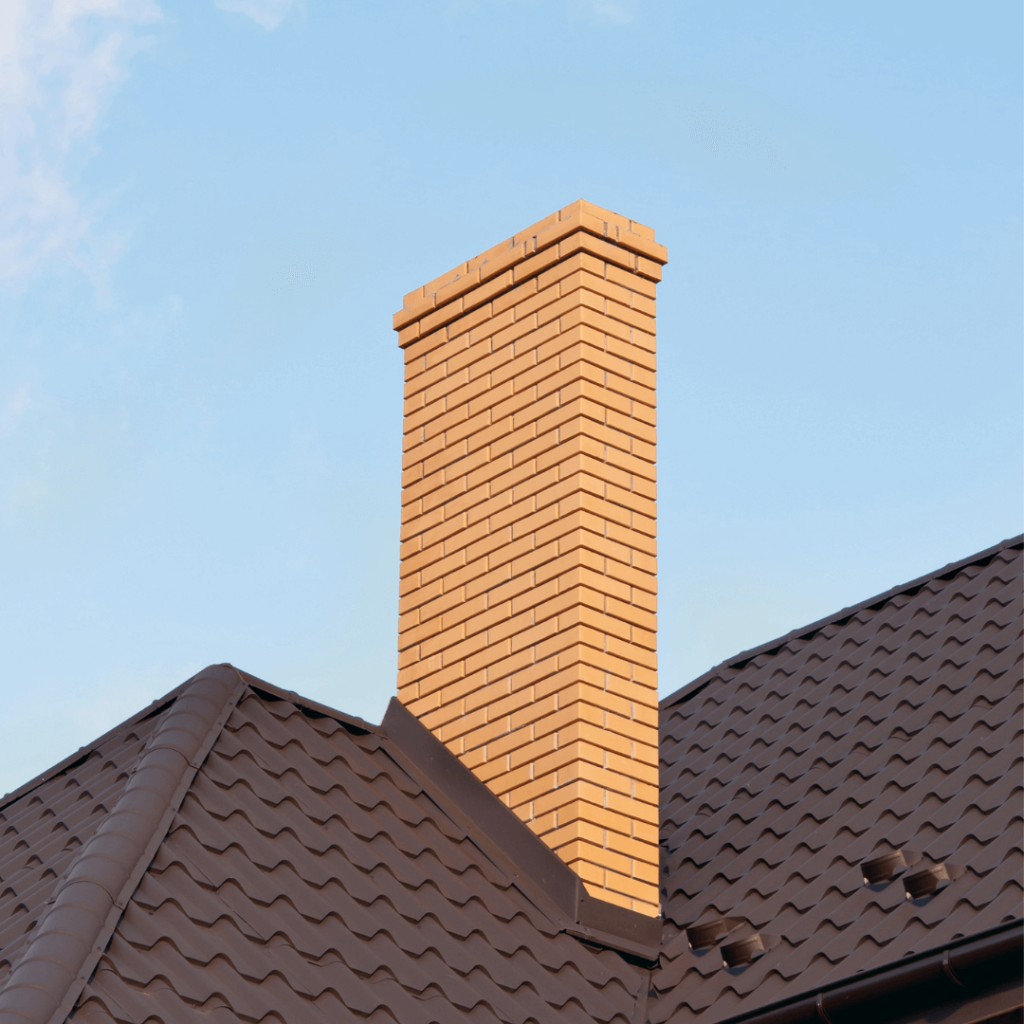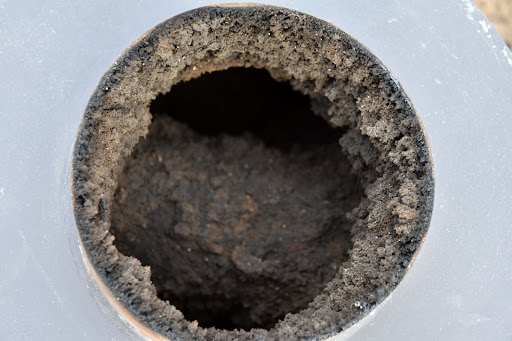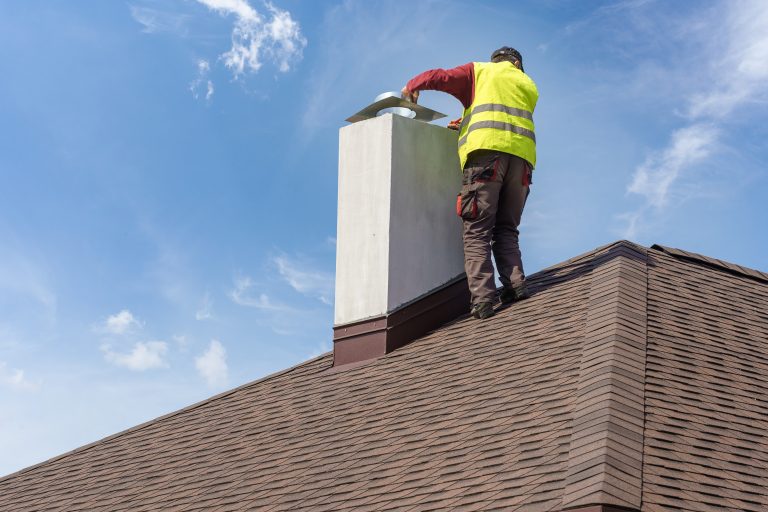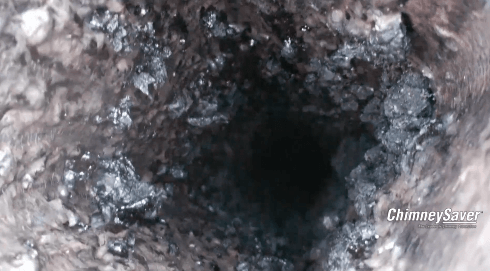
A Complete Guide to Understanding Creosote Build Up
Creosote buildup in chimneys is a common issue that can cause a range of health risks and safety concerns. It’s important to understand the dangers associated with creosote buildup and to take steps to prevent creosote in your chimney.
In this blog, we will discuss the full list of dangers of creosote buildup, including the various health risks and safety concerns, the importance of professional chimney sweeps, and how to tell if creosote buildup is happening.
What is Creosote Buildup?
Creosote is a byproduct of burning wood in fireplaces, stoves, and other heating appliances. It forms when the hot gasses from the fire cool and condense on the inside of the chimney or flue. Over time, creosote in your chimney can build up and create a sticky, tar-like substance that is highly flammable.

What Does Creosote Buildup Look Like?
Creosote is a highly flammable substance that can build up inside chimneys and stovepipes as a result of burning wood or other fuels. Creosote build-up can be dangerous as it can cause chimney fires.
The appearance of creosote can vary depending on its stage of development. Here are some common characteristics of different types of creosote build-up:
Stage 1: In the initial build-up stage of creosote in your chimney, the creosote may appear as a fine, black sooty powder.
Stage 2: As creosote accumulates, it may take on a crusty or flaky appearance. It may be dark brown or black in color and have a tar-like texture.
Stage 3: In the most dangerous stage, creosote can become thick and hard, almost like glazed tar. It can be difficult to remove and may require professional chimney cleaning.
It’s important to have your chimney or stovepipe inspected regularly by a certified chimney sweep to prevent the buildup of creosote and minimize the risk of a chimney fire. For more detailed information on the 3 stages of creosote buildup, we invite you to visit our chimney sweep blog. There, you can find a breakdown of each stage of creosote in your chimney.
How To Tell If Creosote Buildup Is Happening
There are a few signs to look out for to determine if creosote buildup is happening in your chimney. The first sign is a strong, smoky smell coming from your fireplace. Another sign is a buildup of soot around the opening of your fireplace or stove. You may also notice a black, sticky residue on the inside of your chimney or flue.
Are There Health Risks Associated with Creosote Buildup?
Creosote buildup is associated with a few health risks. This is why we stress the importance of keeping up with your chimney inspections and sweeps. Our top priority here at Valley Chimney is to make residential chimneys safer.
Respiratory issues: Creosote buildup can cause respiratory problems, including coughing, wheezing, and shortness of breath. This is because the buildup can release harmful particles into the air, which can irritate the lungs.
Skin irritation: Skin irritation is another risk associated with creosote buildup. If the creosote comes into contact with the skin, it can cause irritation, itching, and redness.
Eye irritation: If creosote particles come into contact with the eyes, it can cause irritation, redness, and even blindness.
Carbon monoxide poisoning: Creosote buildup can also lead to carbon monoxide poisoning. Carbon monoxide is a deadly gas that can be produced if the chimney is not properly ventilated.

Safety Concerns Associated with Creosote Buildup
Apart from the health risks associated with creosote buildup, there are also safety concerns to consider. A way to prevent the safety concerns listed below is to get regular chimney sweeps. Valley Chimney offers the best chimney sweep service in the western suburbs of Chicago.
Fire hazard: One of the biggest risks associated with creosote buildup is the potential for a chimney fire. Creosote is highly flammable, and a buildup of the substance can ignite and cause a chimney fire.
Blocked chimney: Another concern is that a buildup of creosote can block the chimney or flue, which can cause dangerous gasses, like carbon monoxide, to be trapped inside.
How To Prevent Creosote Build-Up
There are many ways to prevent creosote buildup:
- Burn seasoned wood
- Maintain proper airflow
- Install a chimney cap
One of the best ways to prevent creosote build-up is having consistent chimney sweeps, inspections, and cleanings. Cleaning creosote out of your chimney is extremely important for your chimney health.

How to Clean Creosote
Getting rid of creosote is never a DIY project. As any failure to completely remove creosote from your chimney can pose serious safety risks. So when it comes to removal, make sure that you hire professionals that know how to clean creosote.
Our chimney sweep team understands the ins and outs of creosote cleaning. Your expert chimney sweep professionals will examine your chimney, flue, and fireplace, looking for signs of creosote buildup or any other issues. Regularly scheduled chimney cleaning will remove existing creosote and prevent dangerous accumulations. Have trouble remembering to schedule your next chimney cleaning? Try our chimney sweep for Life program and get a free chimney sweep!
Take a look at the typical chimney repairs we encounter in Chicago. Whether it’s a new or old chimney, proper maintenance is crucial. It’s highly probable that your home requires one of our frequently requested chimney repairs or services.
The Importance of Professional Chimney Sweeps
Professional chimney sweeps are trained to inspect and clean chimneys to prevent creosote buildup and ensure safe operation. They can also identify other issues that may affect the performance of your chimney, such as cracks or leaks.
Regular chimney inspections and cleanings by a professional can help prevent health risks, safety concerns, and potential damage to your home. Call us at (630) 553-5995 to schedule a chimney sweep or inspection.
Prevent Creosote Build With Help From Valley Chimney
Creosote buildup is a serious health risk and safety concern that should not be ignored. Respiratory issues, skin and eye irritation, carbon monoxide poisoning, and the potential for a chimney fire are all risks associated with creosote buildup.
It’s important to have your chimney inspected and cleaned by a professional to prevent these risks and ensure safe operation. By taking steps to prevent creosote buildup, you can protect your health, your home, and your loved ones.
To ensure your home’s fireplace works safely, schedule a chimney inspection today. Creosote build-up tends to worsen over time, so taking preventative measures is crucial. Contact us now to book an appointment for a creosote cleaning.
Back To Blog

